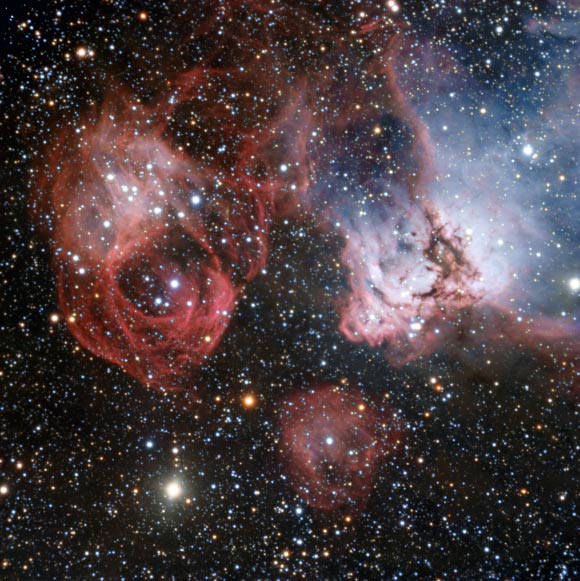An international team of astronomers used ESO’s Very Large Telescope (VLT) at the Paranal Observatory in Chile to observe the emission nebula NGC 2035, one of the Large Magellanic Cloud’s lesser known regions.
The Large Magellanic Cloud is a dwarf galaxy located 160,000 light-years from Earth in the constellation of Dorado. The galaxy is enormous, but when compared to our Milky Way Galaxy it is very modest in extent, spanning just 14,000 light-years – about ten times smaller than our Galaxy.
The Large Magellanic Cloud is actively forming new stars in regions that are so bright that some can even be seen from Earth with the naked eye, such as the Tarantula Nebula.
The emission nebula NGC 2035, sometimes called the Dragon’s Head Nebula, consists of gas clouds that glow due to the energetic radiation given off by young stars.
This radiation strips electrons from atoms within the gas, which eventually recombine with other atoms and release light.
Mixed in with the gas are dark clumps of dust that absorb rather than emit light, creating weaving lanes and dark shapes across NGC 2035.
The filamentary shapes to the left in the new image from VLT are the not the results of starbirth, but rather stellar death. It was created by one of the most violent events that can happen in the Universe – a supernova explosion.
From looking at the image, it may be difficult to grasp the sheer size of these clouds – they are several hundred light-years across.








